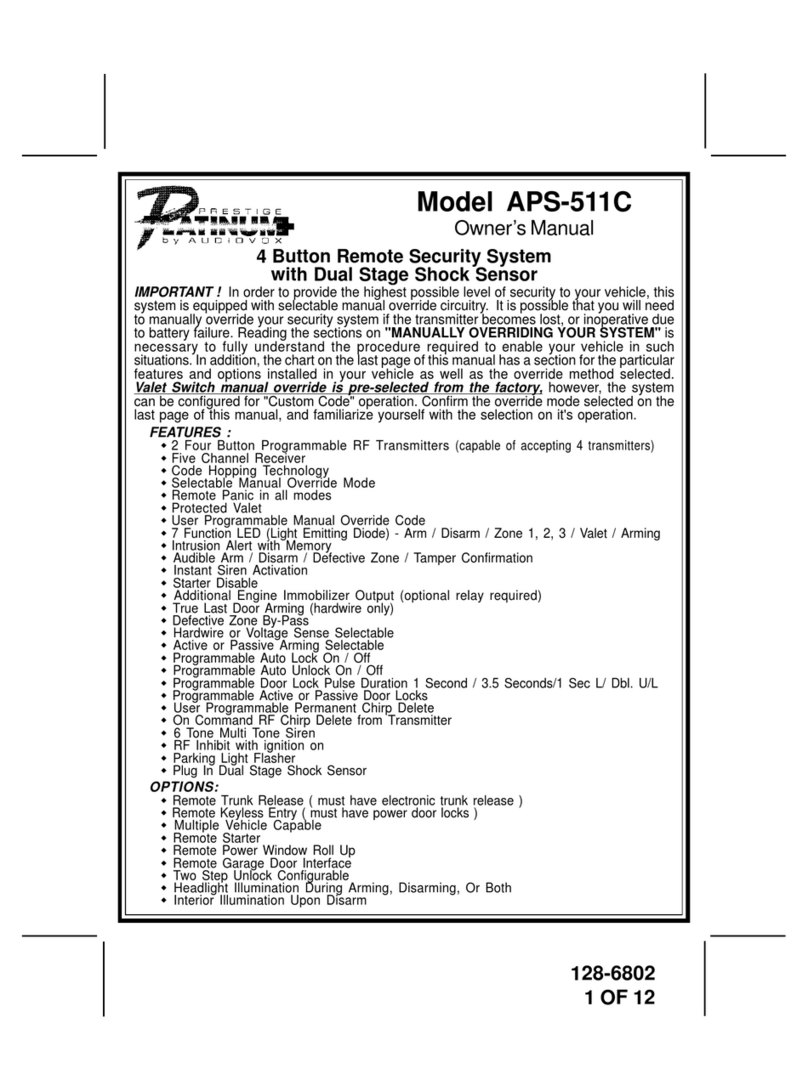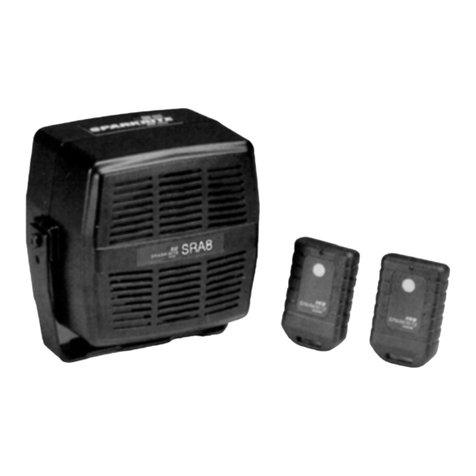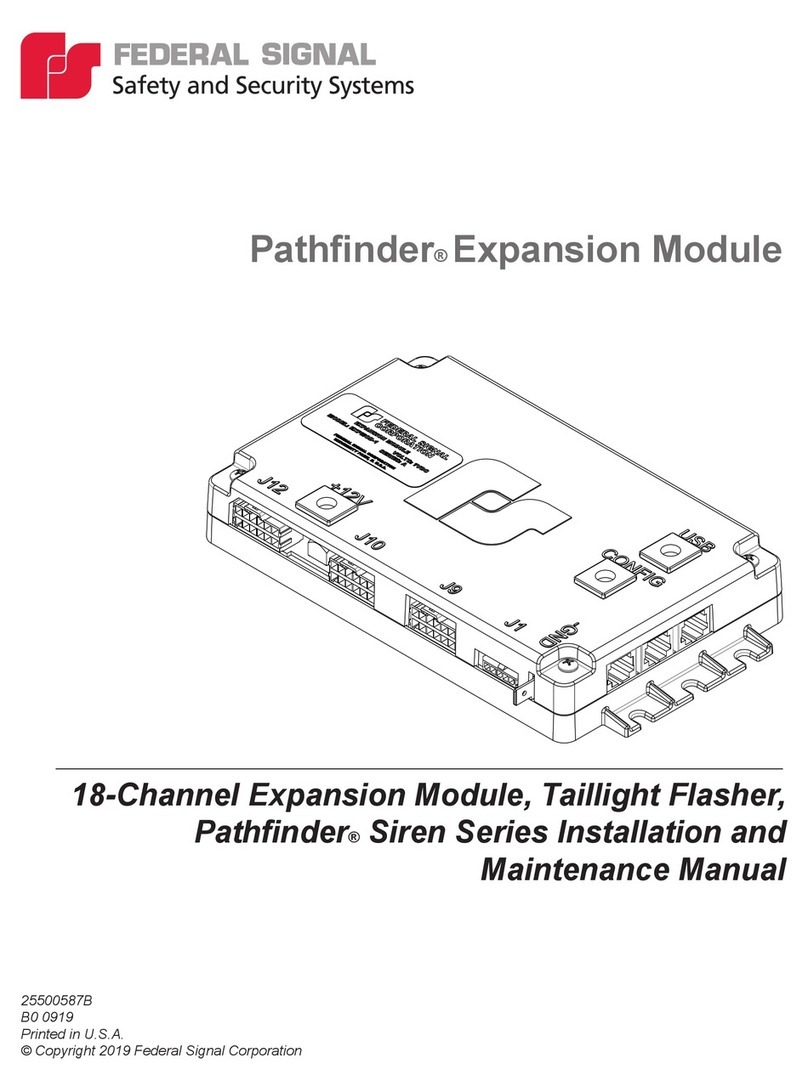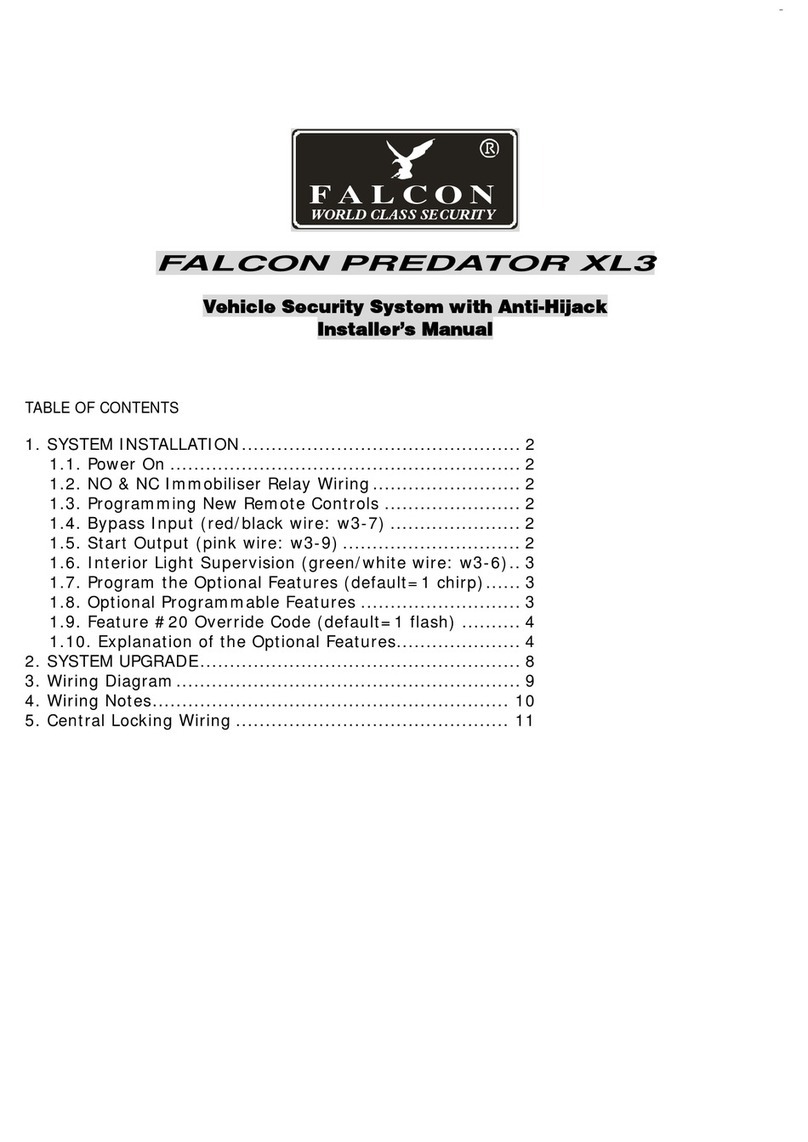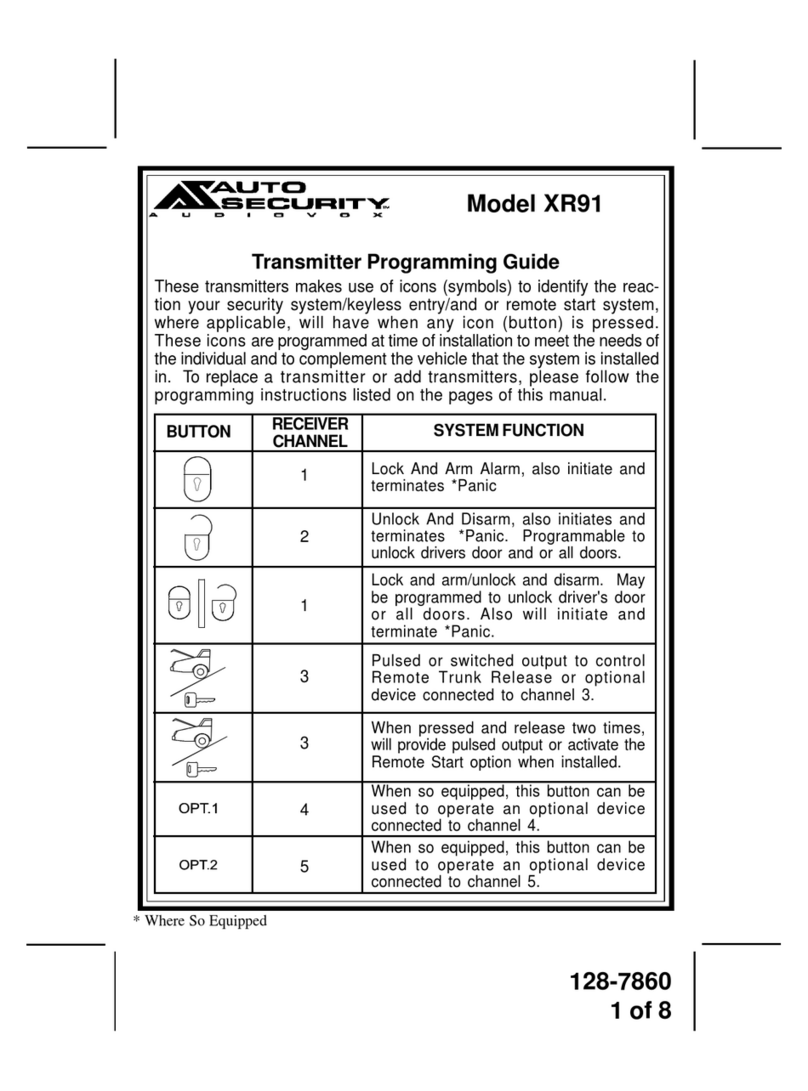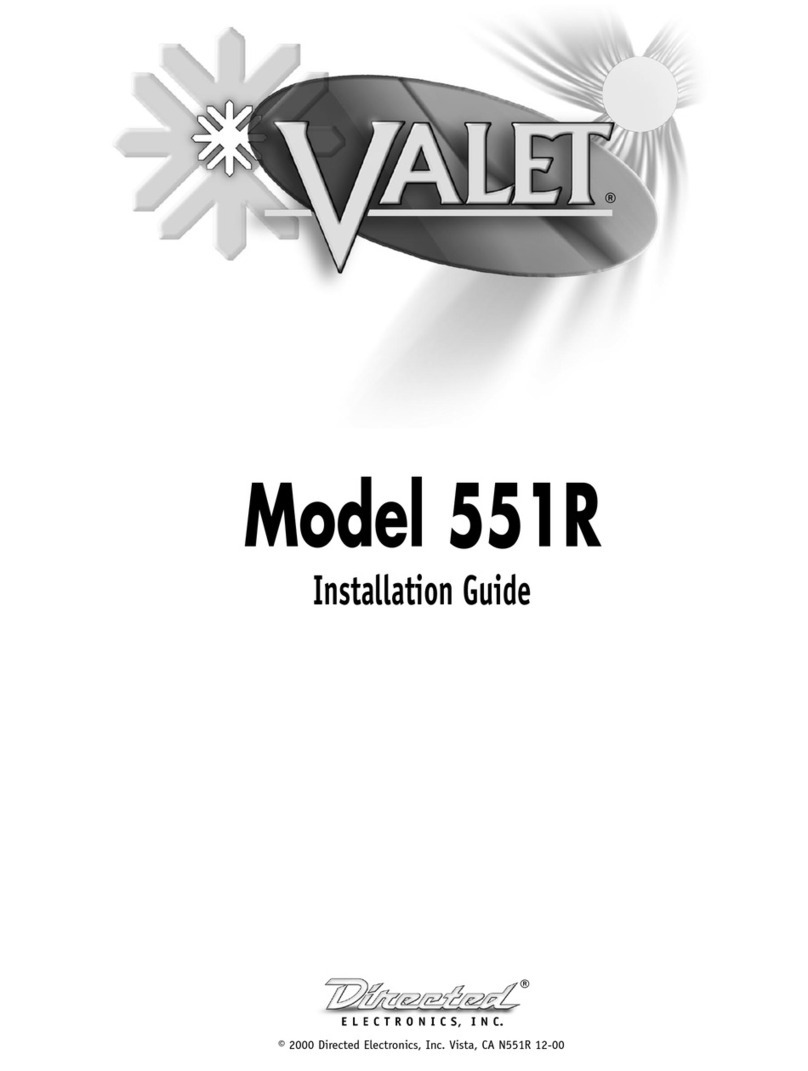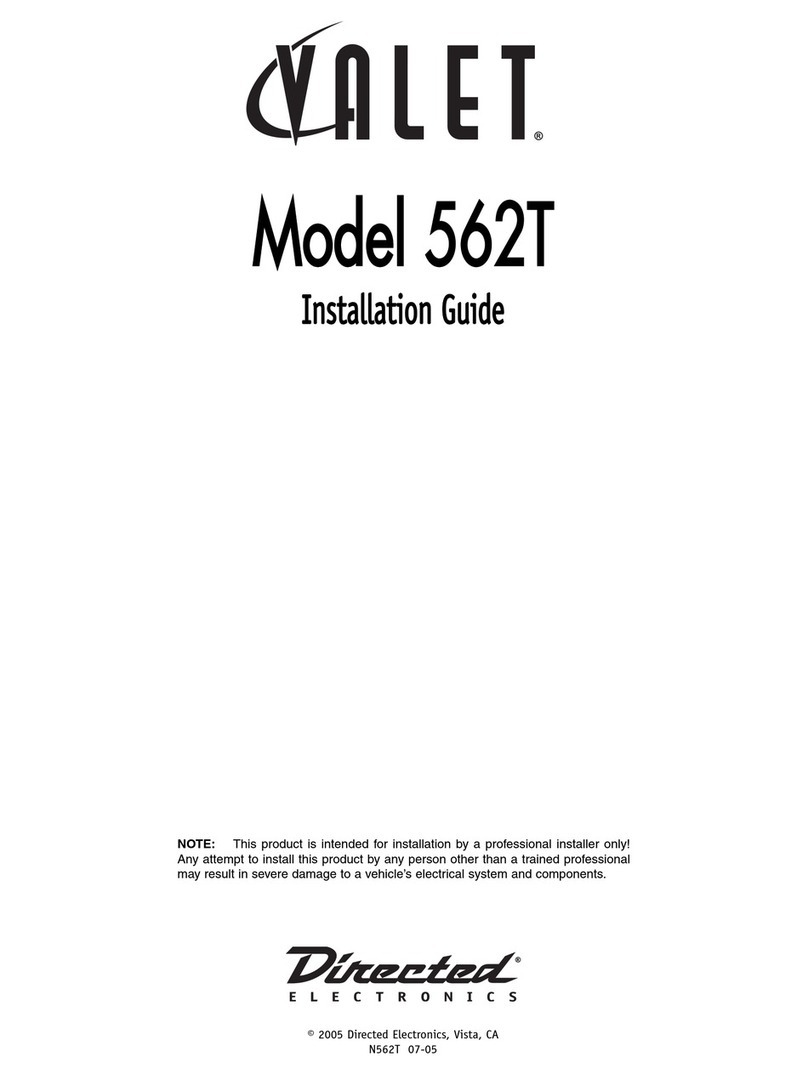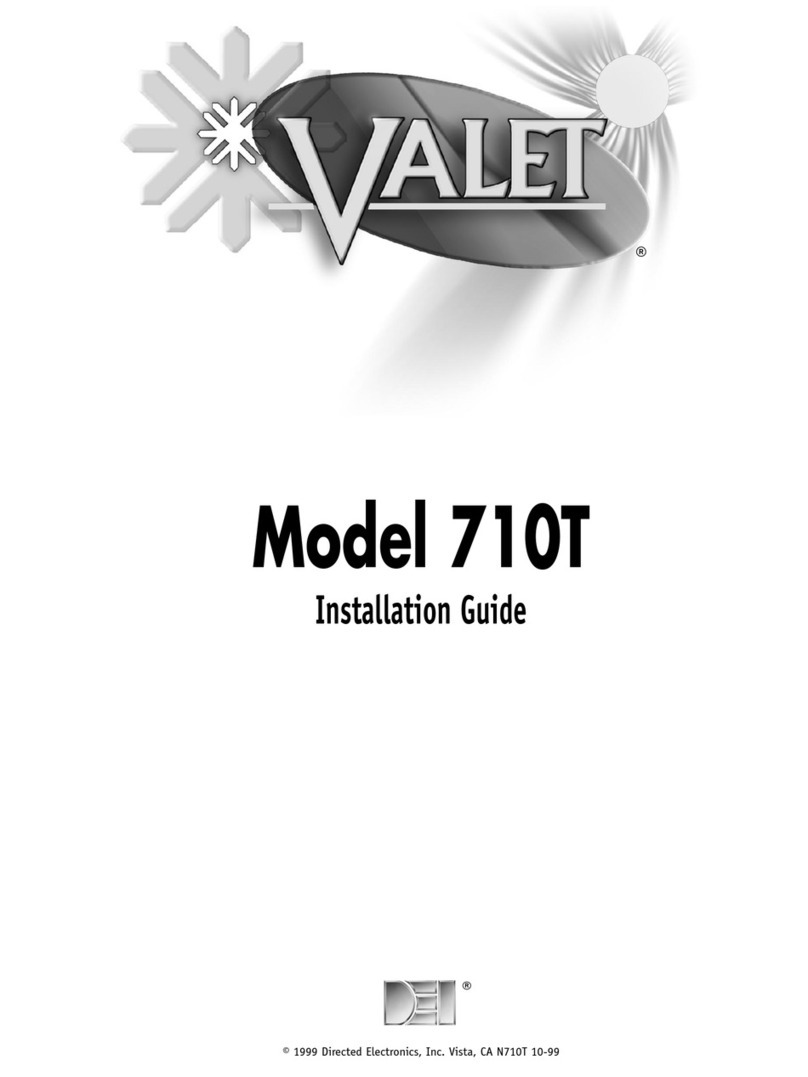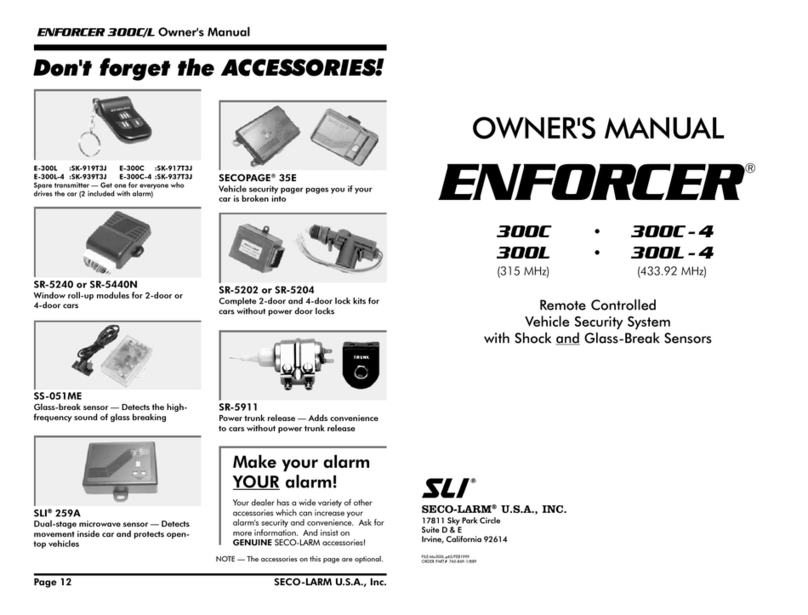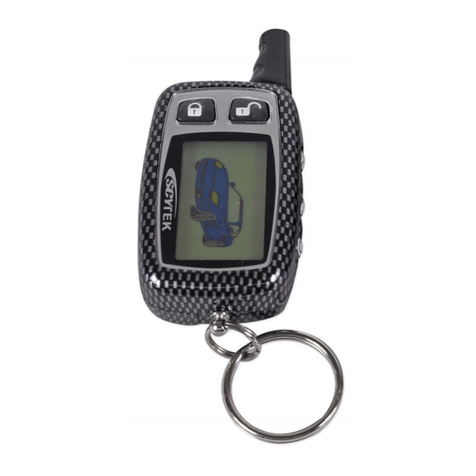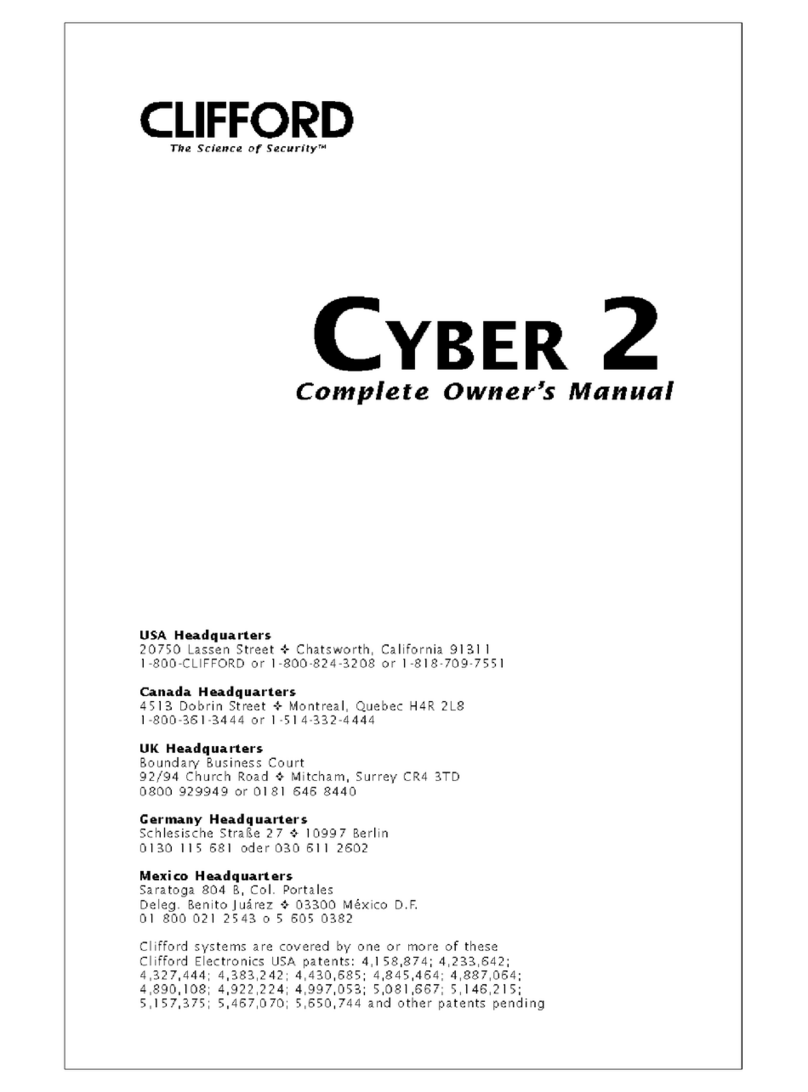2© 2000 Directed Electronics, Inc.
table of contents
What Is Included . . . . . . . . . . . . . . . . . . . . . 3
Warning! Safety First. . . . . . . . . . . . . . . . . . . 4
Installation Points to Remember. . . . . . . . . . . 5
Finding The Wires You Need . . . . . . . . . . . . . . 6
Obtaining Constant 12V . . . . . . . . . . . . . . . 6
Finding the Starter Wire . . . . . . . . . . . . . . . 6
Finding the 12V Switched Ignition Wire . . . . . 7
Finding the Accessory Wire . . . . . . . . . . . . . 7
Finding a (+) Parking Light Wire. . . . . . . . . . 7
Finding the Tachometer Wire . . . . . . . . . . . . 8
Finding the Wait-To-Start Bulb Wire For Diesels . 9
Primary Harness (H1), 8-Pin Connector
Wiring Diagram . . . . . . . . . . . . . . . . . . . . . . 10
Remote Start Ribbon Harness, 5-Pin Connector
Wiring Diagram . . . . . . . . . . . . . . . . . . . . . . 10
Heavy Gauge Relay Satellite Wires
Wiring Diagram . . . . . . . . . . . . . . . . . . . . . . 10
Remote Start Harness (H2), 6-Pin Connector
Wiring Diagram . . . . . . . . . . . . . . . . . . . . . . 11
Primary Harness (H1) Wire Connection Guide . 11
Relay Satellite Key Switch Interface
Wire Connection Guide. . . . . . . . . . . . . . . . . 15
Remote Start Harness (H2), 6-Pin Connector
Wire Connection Guide. . . . . . . . . . . . . . . . . 16
Neutral Safety Switch Interface . . . . . . . . . . 17
GM Trucks, SUVs and Column-Shifting
Passenger Cars . . . . . . . . . . . . . . . . . . . . 19
Pre-1996 Dodge Dakota Pickups with
2.5 Liter Motors . . . . . . . . . . . . . . . . . . . 19
Bypassing GM Vehicle Anti-Theft
Systems (VATS) . . . . . . . . . . . . . . . . . . . . . . 20
1995 and Newer Vehicle Anti-Theft Systems
(Immobilizers) . . . . . . . . . . . . . . . . . . . . . . 21
Passlock I and Passlock II (PL-1 and PL-2) . . 21
Passkey III (PK-3), Transponder-Based Systems. 21
Optional Anti-Grind Relay. . . . . . . . . . . . . . . 22
Plug-in Program Switch . . . . . . . . . . . . . . . . 23
Tach Learning . . . . . . . . . . . . . . . . . . . . . . . 23
Internal Programming Jumper . . . . . . . . . . . . 24
Digital Tach Threshold On/Off . . . . . . . . . . 24
Operating-Settings Learn Routine . . . . . . . . . 25
Features Menu . . . . . . . . . . . . . . . . . . . . . . 26
Feature Descriptions . . . . . . . . . . . . . . . . . . 26
Shutdown Diagnostics . . . . . . . . . . . . . . . . . 28
Timer Mode . . . . . . . . . . . . . . . . . . . . . . . . 29
Safety Check. . . . . . . . . . . . . . . . . . . . . . . . 29
Troubleshooting . . . . . . . . . . . . . . . . . . . . . 30
Wiring Quick Reference Guide . . . . . . . . . . . . 32
Bitwriter™, Code Hopping™, DEI®, Doubleguard®, ESP™, FailSafe®, Ghost Switch™, Learn
Routine™, Nite-Lite®, Nuisance Prevention Circuitry®, NPC®, Revenger®, Silent Mode™, Soft Chirp®,
Stinger®, Valet®, Vehicle Recovery System®, VRS®, and Warn Away® are all Trademarks or Registered
Trademarks of Directed Electronics, Inc.

